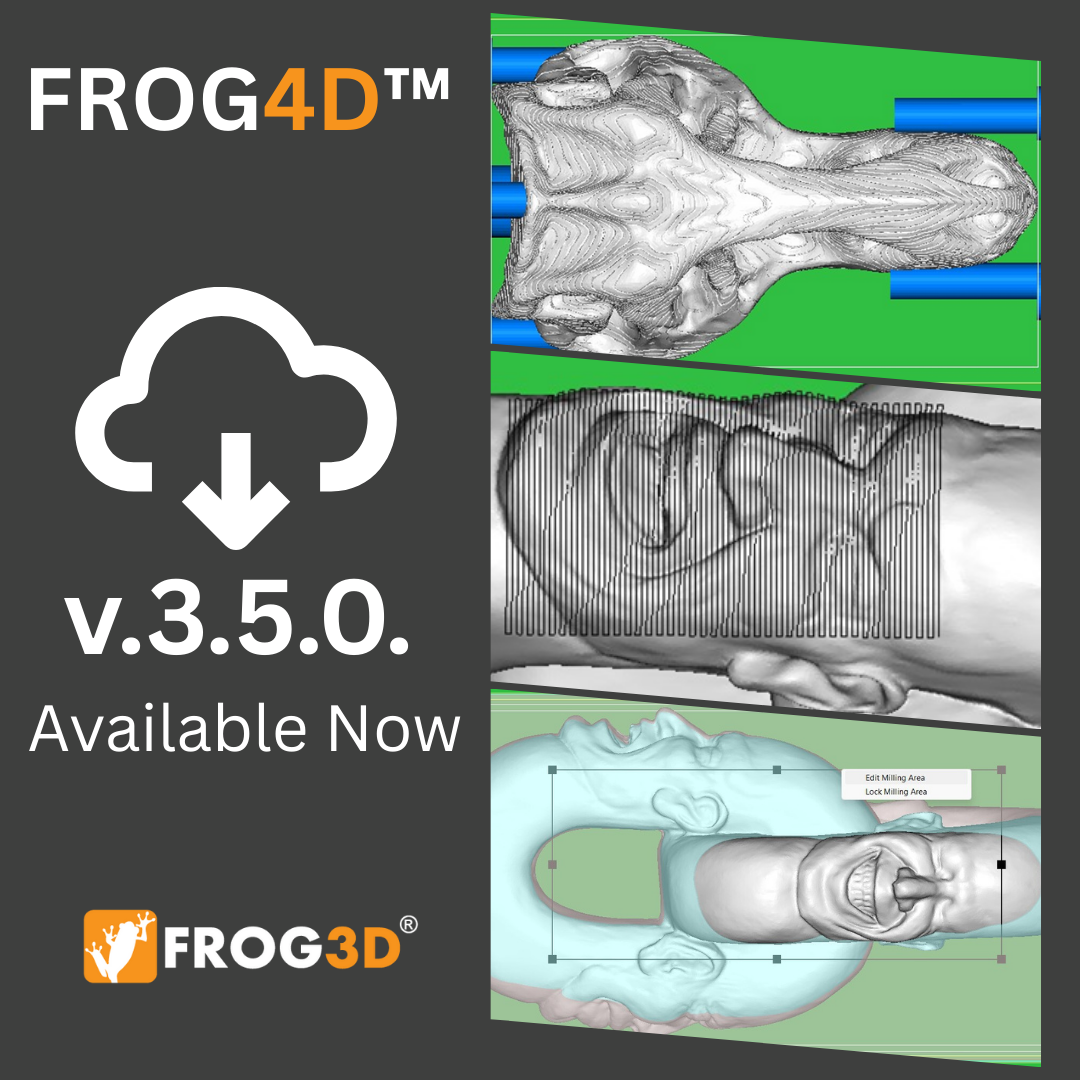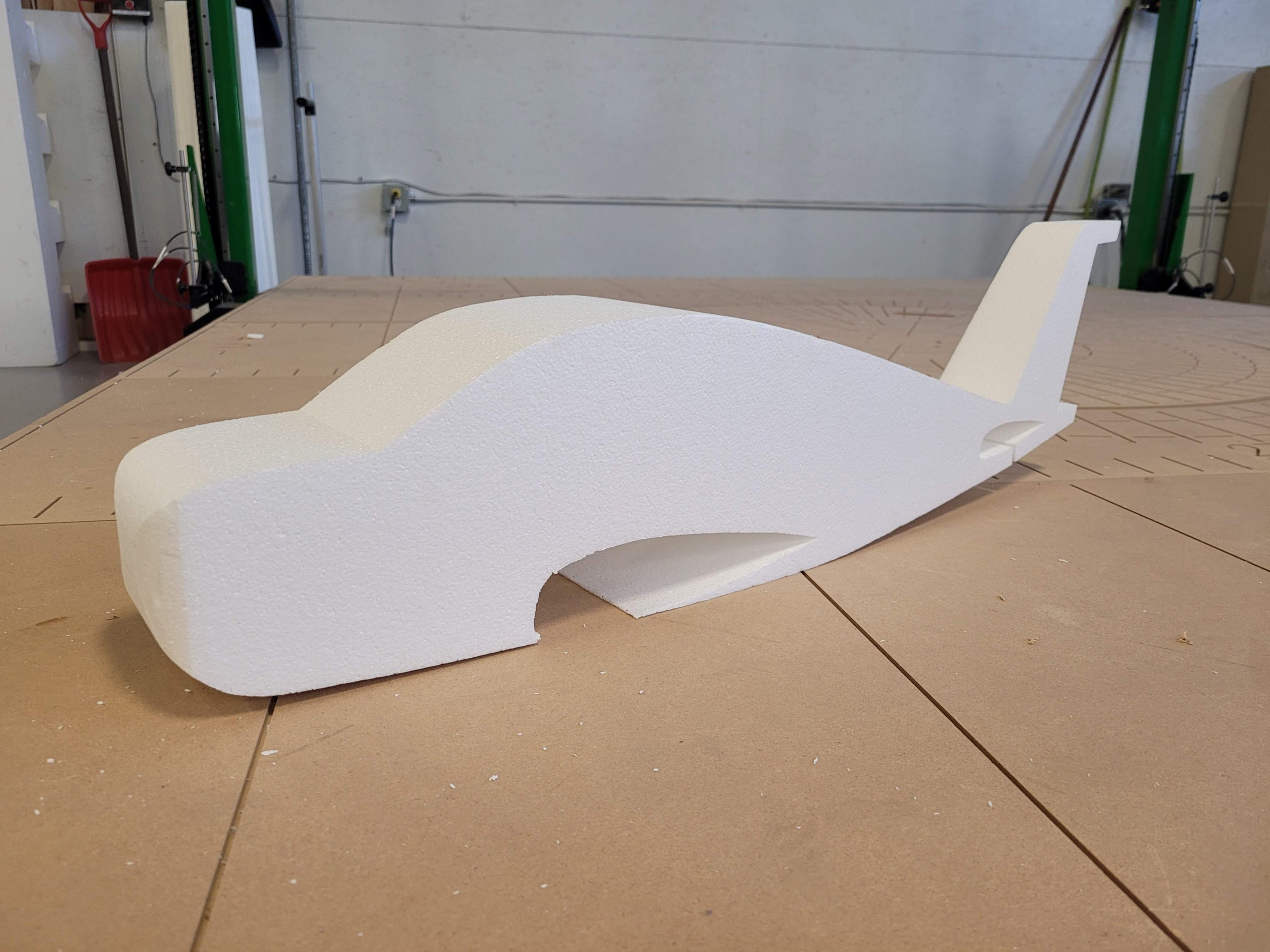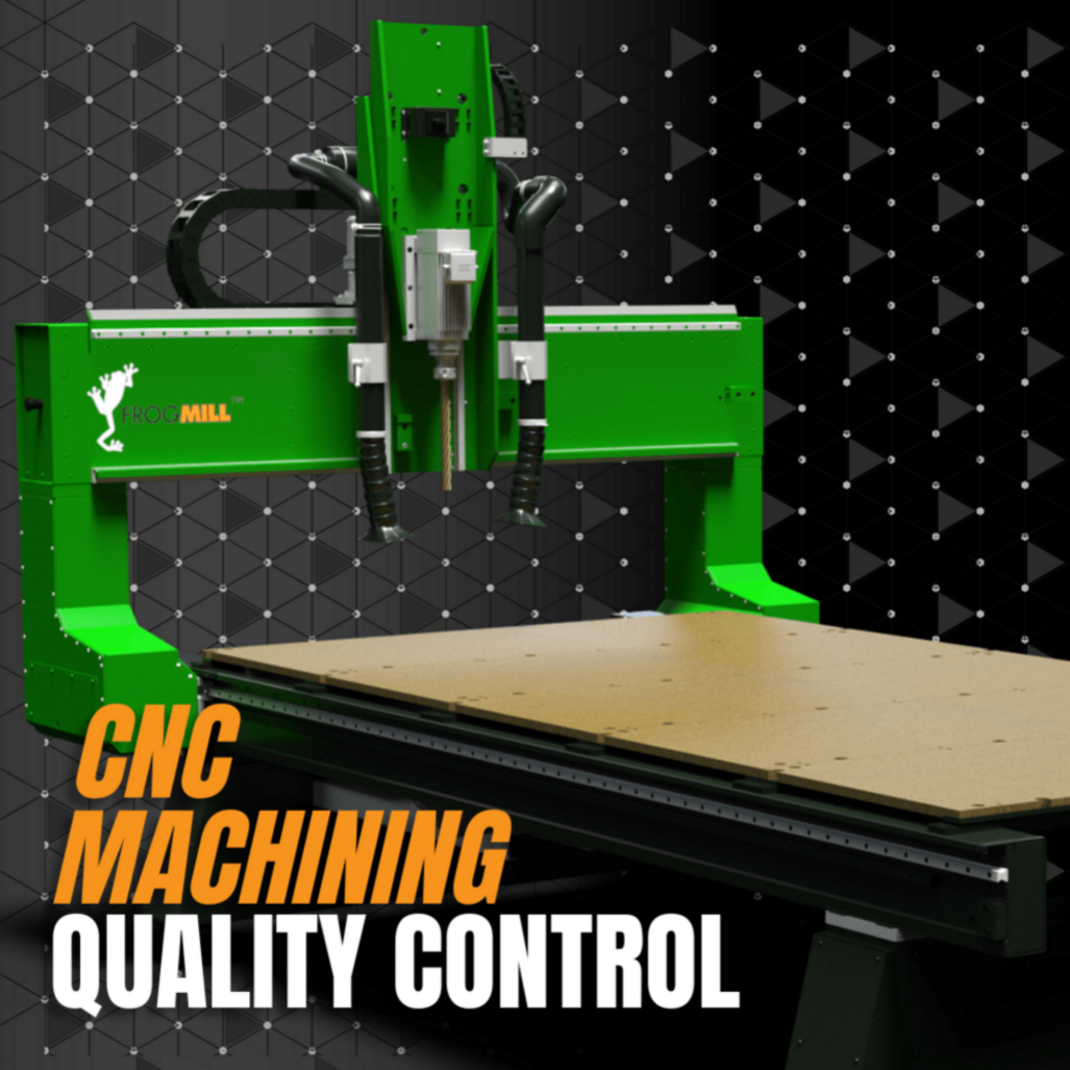Today, CNC fabrication is utilized in a wide array of applications from manufacturing medical devices and aerospace parts to producing household appliances. While CNC technology is predominantly associated with the precise machining of manufacturing parts, it also extends its potential to the creation of intricate sculptures, 3D objects, wall art, custom furniture, interactive exhibits, and so much more! For businesses focusing on pop-ups, events, and trade show booths, CNC fabrication offers a unique opportunity to craft engaging and immersive physical environments. Read ahead to discover what CNC fabrication is and what makes it an essential manufacturing process in present-day fabrication sectors.
Table of Contents
What Is CNC Machining?
CNC (Computer Numerical Control) machining is a manufacturing process where pre-programmed computer software directs the movement of machinery and tools. The concept of CNC originated in the 1940s and 1950s with the development of the first numerically controlled machines which utilized punched tape technology to control their movements. Advancements in computer technology and software over the decades have transformed these machines into highly sophisticated and versatile tools. The advent of microprocessors and the development of computer-aided design (CAD) software in the 1970s revolutionized CNC technology, thus enabling increasingly complex designs and greater precision. CNC machines are now integral to industries such as aerospace, automotive, electronics, and medical devices among several others.
This technology is utilized in a wide range of applications such as small-scale operations to large-scale manufacturing industries to produce complex parts and components with high precision and consistency. CNC machines are guided by software and code that automates the operation of equipment such as grinders, lathes, and mills. These are utilized to cut, shape, and create various components and prototypes. Unlike manually controlled machines, CNC machines operate using G-code which is a language that specifies precise production parameters such as feed rate, speed, location, and coordination which makes them a fundamental part of modern manufacturing.
What Is CNC Fabrication?
CNC fabrication is a term that incorporates CNC machining to shape and assemble parts and structures. CNC fabrication is a highly versatile and precise manufacturing technique that incorporates several steps to transform designs into tangible products for accurate and efficient production across several industries
The CNC fabrication process involves several steps. To understand what CNC fabrication is, the following actions are involved in the manufacturing process:
- Designing with CAD Software: The process starts with creating a detailed design of the part or component utilizing CAD (Computer Aided Design) software, where engineers and designers utilize CAD to create precise drawings and 3D models.
- Converting to CNC Code: Once the initial design is complete, it is then converted into CNC code utilizing Computer Aided Manufacturing (CAM) software. This code is often present in the form of G-code which provides instructions for the CNC machine on how to produce the part.
- Configuring the CNC Machine: This step of the CNC fabrication process involves setting up the machine with appropriate tools and materials, in addition to the cutting tools, securing the workpiece, and inputting the CNC code.
- Running the CNC Program: The CNC machine runs the program which follows the precise movements dictated by the code to produce the part. This process can involve cutting, milling, turning, or other operations depending on the design.
- Finishing: After the components are produced, additional finishing processes such as sanding or coating, can be applied to deliver the final touch.
CNC fabrication is a fully automated and versatile process used for a wide range of applications, such as constructing large architectural structures and frames to create small and intricate prototypes. This versatility increases manufacturing potential for producers and fabricators alike, where the sky is the limit!
Materials Used In CNC Fabrication
Knowing what CNC fabrication is, helps in selecting the appropriate material for a specific application to ensure optimal performance and results. The following materials are typically utilized in CNC fabrication:
Wood
Wood is a commonly used material in CNC machining and fabrication because it is easy to machine, offers strength and hardness, and there is a wide range of types of wood available. It is a popular choice for furniture, home decor, and DIY projects. However, wood machining creates a large amount of dust which can pose health risks to its workers which is why it is essential for workshops to have a proper dust collection set-up in place.
Composites
Composites are produced from a combination of two or more materials with different properties. Understanding what CNC fabrication is also entails highlighting and emphasizing the importance of these materials. Combining materials with unique physical and chemical properties creates a new material with distinct features, which may also contain other additives and fillers to customize the necessary properties to achieve a better surface finish. Composites are commonly utilized in the automotive, marine, aviation, sports, and medical industries. There are four common types of composites that are used frequently in CNC machining: Wood composites, reinforced plastics, metal composites, and ceramic composites.
Acrylic
Acrylic is chemically known as plexiglass, and this material has superb optical clarity, strength, and rigidity. Due to its high transparency, manufacturers utilize it commonly as a glass replacement. CNC machining acrylic allows for the production of acrylic parts with highly precise shapes and sizes. By applying optimal force through the cutting process, CNC machining helps prevent significant damage to acrylic material while accelerating the process. Acrylic is a thermoplastic that is ideal for creating products like headlights, taillights, LCD screens, medical devices, and furniture.
Foam
There’s a high demand for foam in the manufacturing industry, especially for fabrication and machining purposes. Foam cutting and machining are increasingly sought after for various applications such as props, scenic design, sculptures, signage, monuments, displays, prototypes, architectural elements, precast molds, construction, packaging, insulation, and more.
Two common types of foam used in CNC fabrication are Polyurethane and Expanded Polystyrene (EPS) foam. EPS foam serves as a cost-effective substitute for metal and wood, offering easier accessibility. Its properties provide a competitive advantage in the market, enabling the handling of larger and more intricate projects without the associated high costs. With its composition being 98% air, EPS foam boasts exceptional cushioning properties, minimal moisture absorption, and complete recyclability. Its malleability makes it effortless to shape and bend, making it an ideal choice for 3D projects like sculptures, molds, theater props, themed environments, exhibits, and architectural models, among others.
By understanding what CNC fabrication is and the materials that this process utilizes, manufacturing and fabrication businesses can benefit from the extreme versatility and efficiency that this technology is able to provide.
Advantages of CNC Machining In Fabrication Industries
When understanding what CNC fabrication is, it is important to consider the plethora of benefits associated with this process over traditional fabrication methods, such as the following:
- Precision and Accuracy: The key benefit of CNC machining lies in its capacity to deliver remarkably precise and uniform parts. With computerized control at the helm, each component is crafted precisely to the specified requirements. This level of precision proves indispensable in industries that demand utmost accuracy.
- Efficiency and Productivity: CNC machines can operate without requiring any downtime, which leads to increased productivity and faster production times.
- Flexibility and Versatility: CNC machines can be reprogrammed to create different parts which allows for greater flexibility in manufacturing and fabrication.
- Reduced Waste: CNC machines are very precise which translates into reduced material waste and cost savings along with the added benefit of environmental sustainability.
- Complex Geometries: CNC fabrication involves creating complex shapes and intricate designs with CNC machining that would be otherwise impossible to create with manual processes.
Applications of CNC Fabrication
CNC fabrication plays a crucial role in many industries as this technology provides high-quality production, customizability, consistent accuracy, and repeatable results regardless of the project’s scope. The following are some applications of CNC fabrication:
Themed Environments and Scenic Fabrication
What is CNC fabrication in a themed environment? CNC fabrication processes can create large-scale sculptures and interactive exhibits for themed parks and attractions. For theater sets, it is possible to create detailed and realistic set pieces and props with CNC fabrication techniques for films and live performances. This process can also be used for designing and producing museum exhibits, dioramas, and display elements with high detail and precision.
Signage Manufacturing
CNC fabrication allows businesses to produce high-quality custom signage for businesses, events, and public spaces. For retail stores and displays, CNC fabrication can create eye-catching and detailed retail displays and point-of-purchase fixtures.
Architectural Fabrication
It is simple to craft architectural elements such as cornices, columns, and decorative moldings with CNC fabrication techniques for facade elements, as well as custom interior design elements such as wall panels, fireplace surrounds, and furniture pieces. CNC fabrication processes enable the creation of unique and durable outdoor structures and decorative elements that can be weather-resistant with the appropriate coatings and finishes.
Automotive
CNC machining facilitates the production of automotive components such as axles, transmissions, and engine parts. It enables rapid prototyping and testing of new designs, accelerating development times and enhancing the efficiency of production lines.
Healthcare
The medical industry employs CNC technology to manufacture complex and high-precision tools and devices, including orthopedic instruments.
Take Your CNC Fabrication To New Heights With The Comprehensive FROG3D® System
CNC machining has transformed fabrication industries by enabling the efficient and cost-effective production of high-quality parts with utmost precision. Understanding what CNC fabrication is and its capacity to manage complex designs and streamline production processes makes CNC machining essential in contemporary fabrication operations. CNC machining continues to expand its capabilities with ongoing technological advancements, pushing the limits of what is deemed achievable in fabrication industries.
FROG3D® technology facilitates the creation of intricate components beyond the reach of traditional methods which provides a competitive edge across various industries. The following are the in-demand equipment for fabrication industries from FROG3D®.
FROGScan™ Flash – Peel 3
Exploring what CNC fabrication is includes understanding the importance of precise and efficient scanning technology. Using advanced white light technology, the FROGScan™ Flash – Peel 3 can capture a digital 3D scan in seconds and in full color. This portable and standalone solution is easy to transport and set up as needed.
After scanning, the scanned file can be edited and prepared for production, which can then be passed to the FROGMill™ for precise replication or enlargement. Expand your capabilities and grow your product line with FROGScan™ Flash – Peel 3! It can generate cans with up to 100-micron accuracy and is designed to withstand use in an industrial environment with the ability to capture high-quality geometry and colors simultaneously.
FROGMill™
The FROGMill™ is our 4-axis CNC foam carving system designed for large-scale fabrication projects. It is capable of handling massive blocks of foam, making it ideal for creating large sculptures, props, and architectural elements. With the FROGMill™, designers are capable of executing fine details and smooth finishes with easy-to-operate and intuitive software to create larger and more intricate pieces. The FROGMill™ is engineered to handle heavy materials such as wood with precision linear rail and linear bearings to ensure maximum resolution and accuracy.
FROGMill™ Lite
Ideal for fabricators and start-ups with moderate production needs, budgets, or limited shop space, the compact FROGMill™ Lite CNC router offers exceptional quality, training, and support, consistent with all FROG3D® products. Replace labor-intensive manual processes with this automated solution to take on larger, more profitable projects and achieve impressive results. Designed to grow with your business, FROGMill™ Lite handles a variety of materials, including wood, foam, acrylic, and MDF, perfectly aligning with what CNC fabrication is.
FROGMill™ Lite will equip you to drive production, expand capabilities, and grow your bottom line. It includes an optional 4th axis to add functionality later and a single-phase power supply for easy installation in any space. All FROG3D® products come with top-tier training programs and technical support to ensure you get up and running quickly.
FROGWire™
CNC fabrication is ideal for creating intricate shapes and complex geometries from foam, making it a popular choice in the theming, signage, and architectural industries. The FROGWire™ is our advanced CNC hot wire foam cutting machine which prepares foam for detailed milling or creates stunning final products. With rapid travel speeds of 2800 IPM and a maximum cutting speed of 50 inches per minute for Type 1 EPS, the FROGWire™ offers efficient and swift cutting capabilities.
Featuring independent axis control and the ability to use up to two wires simultaneously, the FROGWire™ opens up new possibilities for a range of creative projects for CNC fabrication.
FROGSkin™ by Graco
The FROGSkin™ by Graco is an electric spray system for applying polyurea and other protective coatings. It is the perfect solution for adding durable, smooth, or textured finishes to architectural, sculptural, and themed pieces, as well as negative cavity molds. When paired with Streamline Automation’s FROGCoat™ line of coatings, FROGSkin™ by Graco becomes the ultimate solution for a wide range of CNC fabrication applications, particularly for creating weather-resistant outdoor displays and sculptures out of foam. Key features of the FROGSkin™by Graco include providing a durable and protective layer, ensuring a high-quality smooth finish, and offering easy application with quick setup and cleanup.
Conclusion
The FROG3D® System stands out as the foremost turnkey 3D CNC solution in the industry, offering complete integration and full automation where every element seamlessly collaborates to provide a comprehensive solution. Engineered to meet the precise fabrication needs of producers across all manufacturing scales, Streamline Automation’s FROG3D® equipment and products ensure accuracy at every step.
With our fully automated FROG3D® System, producers gain the capability to execute complex and large-scale projects that were once unattainable through traditional methods. By embracing automated solutions in lieu of traditional approaches, our engineered solutions will transform your imaginative product concepts into tangible realities. Reach out to us today to explore how Streamline Automation’s FROG3D® System can elevate your business by enhancing production capabilities and unlocking manufacturing potential.




